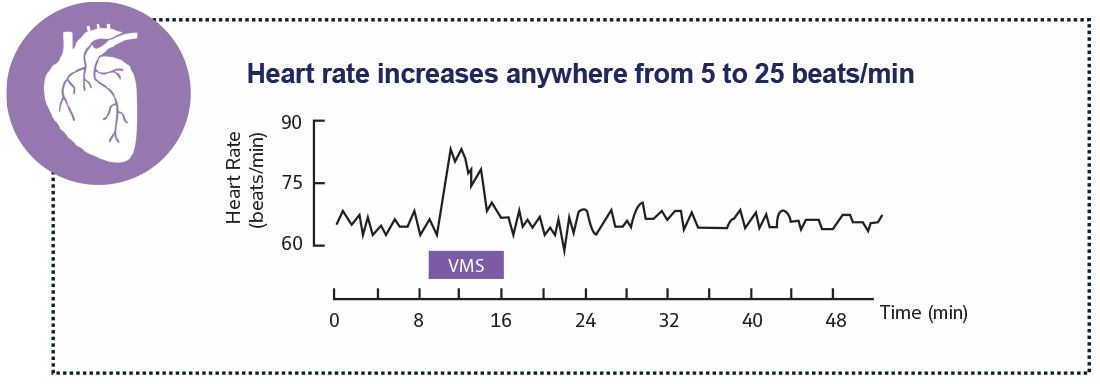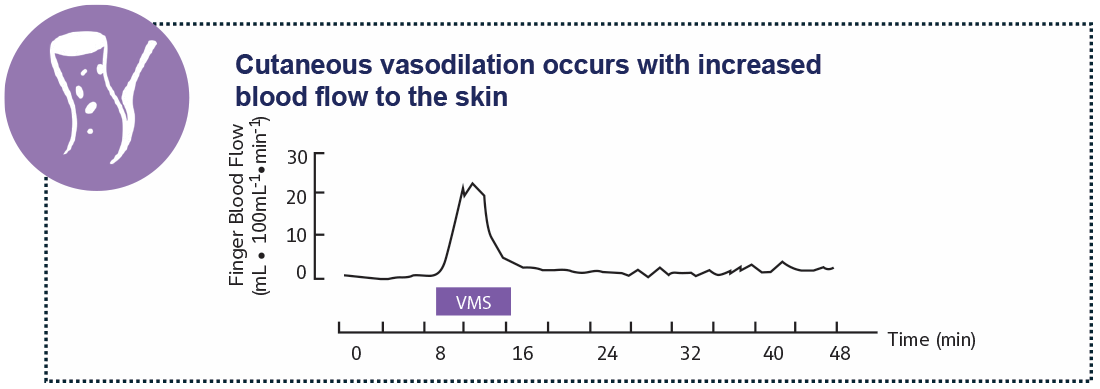Vasomotor symptoms
(VMS) due to menopause
Vasomotor symptoms
(VMS) due to menopause
Explore our video library to gain a better understanding of the biology behind vasomotor symptoms due to menopause. Learn about the neuronal pathways behind VMS from experts in the field of neuroendocrinology.
What is a KNDy neuron?
Victor Navarro, PhD, explains how KNDy neurons, and the neuropeptides they secrete (Kisspeptin, Neurokinin B and Dynorphin) function as a GnRH pulse generator in the Hypothalamic Pituitary Ovarian (HPO) Axis.
How are KNDy neurons involved in menopause?
In this video, Victor Navarro, PhD, discussed how collaborative research efforts help to elucidate the role of KNDy neurons in mediating VMS due to menopause.
VMS severity can be defined as followsa,b:

MILD
Sensation of heat
without sweating

MODERATE
Sensation of heat
with sweating

SEVERE
Sensation of heat
with sweating
causing cessation of
activity
How she might describe it in her own words:
“I had a feeling of
warmth spread over
my body”
“I got so hot I started
to sweat”
“The feeling of heat and
sweat was so intense I
had to stop what I was
doing to try and cool
off”
aGuidance for industry: estrogen and estrogen/progestin drug products to treat vasomotor symptoms and vulvar and vaginal atrophy symptoms - recommendations for clinical evaluation. Rockville, MD: Food and Drug Administration; 2003. Available at https://www.fda.gov/media/71359/download.
bIndividual patient perception of VMS severity is subjective.
Thermography of a hot flash
This video shows infrared images of a woman experiencing a hot flash. It illustrates how body temperature rises and then gradually declines as the hot flash recedes.
Physiologic changes during VMS



Kronenberg F. J Nutr. 2010;140(7):1380S-5S. doi:10.3945/jn.109.120840.
Want to see more?
Sign up to receive additional information




